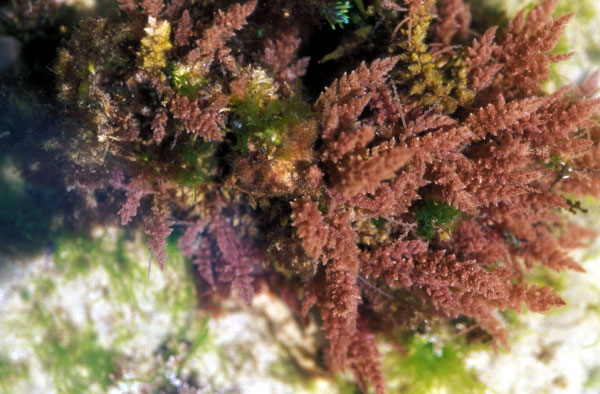A Modeling and Mapping Tool for Seaweed Farms in the United States: Seaweed AquaModel
SSA is completing initial development and validation of a seaweed modeling tool within a geographical information system to support the growth of seaweed farms in the United States. Seaweed AquaModel was developed exclusively by our team and some of the collaborators listed below and is presently a "beta" software system undergoing preliminary testing in Hood Canal, Washington State. It is a companion software product of a well-known fish farm modeling system known as AquaModel. Used by NOAA National Ocean Survey and several foreign governments, Fish AquaModel calculates the growth, waste production, benthic and water column effects of floating fish farms. The Seaweed AquaModel calculates the growth and nutrient assimilation of macroalgae farms and effects on carbonate chemistry.
Specifically, Seaweed AquaModel simulates nutrient flux by the cultured macroalgae as well as nitrogen-phytoplankton-zooplankton kinetics in ambient waters. The system is designed to help farmers, investors and regulators of seaweed farms select optimal sites for farming and determine appropriate size scales of operations. The simulation model generates dynamic maps of conditions within and around the kelp farm, helping users assess adverse interactions with existing uses along the coastline and avoid placing farms in waters where physical and biological conditions at times of the year are detrimental to operations and production. Examples of factors that are critical for seaweed farm site selection that are either inputs or outputs of the calculations include water quality (e.g. algal blooms, pollutants), temperature, nutrient concentration, flow rates at different depths, wave height and/or wind speed.
The goal of the modeling tool is to help direct siting and spacing for optimal development of kelp farms throughout North America but initially in the Northeast United States, the Gulf of Maine where commercial farms are already operating, and in parts of Puget Sound including the Strait of Juan de Fuca, where kelp farms are absent, but where conditions for developing farms appear at first glance to be most promising. We anticipate altering the existing architecture of Seaweed AquaModel to be more user friendly than the research version presently used that has components designed for ocean acidification research. The software will be available in self-installing Windows format including a free basic version sufficient for siting and analysis of individual farms. A far field version will also be available commercially for analysis of the effects of several farms over large coastal areas.



